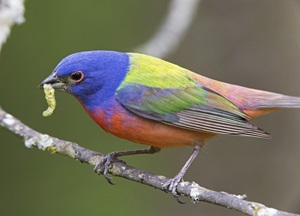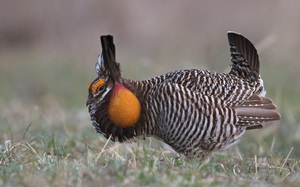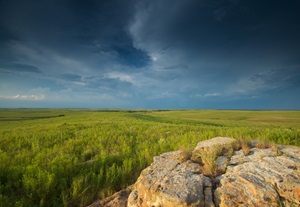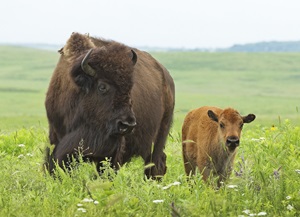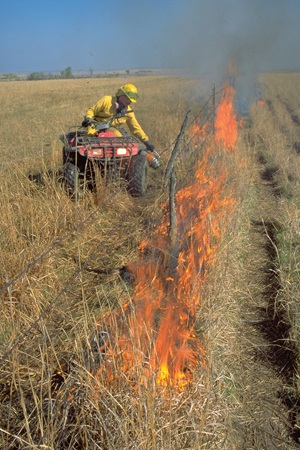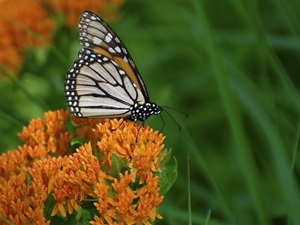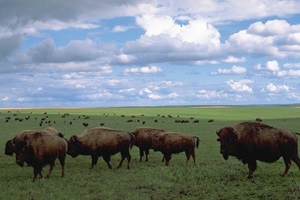Room to roam: Bison, birds, beetles, butterflies and 40,000 acres of real estate
In Oklahoma, The Nature Conservancy carefully manages the planet’s largest protected remnant of tallgrass prairie landscape
It seems flagrantly ironic, but fire is one of the tallgrass prairie landscape’s best friends.
It kills invasive trees and shrubs, it prevents the spread of brushland, it benefits animals big and small—and it’s one of the primary tools used by The Nature Conservancy on Oklahoma’s 39,650-acre Joseph H. Williams Tallgrass Prairie Preserve to nurture new growth, and protect one of the world’s most endangered ecosystems.
“In the past 25 years, our Oklahoma chapter of has burned almost a million acres statewide. We use ‘patch burns,’ or prescribed fires, to mimic historical fire frequency, and that helps prevent catastrophic wildfires from taking place,” notes Meghan Raleigh, donor relations manager for the Oklahoma chapter of The Nature Conservancy.
“The ‘patch burns’ clear away the old, dead vegetation and create lush regrowth—and that attracts wildlife from all over. As an example, our bison herd really likes freshly burned areas, because the new grass is high in protein,” she adds.
“It’s a wildlife-friendly method of land management. Our Tallgrass Prairie Preserve director Bob Hamilton loves to say: ‘Burn it, and they will come.’ ”
The Tallgrass Prairie Preserve, near Pawhuska, was the first large-scale landscape project for The Nature Conservancy when it purchased the land from the Chapman-Barnard Rach in 1989. With less than 4 per cent of tallgrass prairie remaining on earth, the Tallgrass Prairie Preserve is the largest protected remnant of this landscape still in existence.
The preserve provides refuge for:
- The migrating monarch butterfly, bees and other pollinators;
- More than 600 plant species, predominantly tall warm-season grasses including big and little bluestem, Indian grass and switchgrass;
- More than 300 bird species, including the greater prairie chicken, the upland sandpiper and the scissor-tailed flycatcher; and
- More than 80 mammal species, including coyotes and bobcats.
Image gallery: Tallgrass Prairie Preserve
Speaking of mammals, the preserve’s bison herd has grown from about 300 from a private 1993 donation to about 2,700, on the rolling Oklahoma plains where the big beasts were nearly killed off by the late 1880s.
“We round them up once a year, and we sell 600 to 700 a year to keep the population steady and sustainable, but we really don’t mess with them at all. We try to keep them as wild as possible,” says Raleigh.
Enbridge is committed to sustainable energy production—helping to meet North America’s growing energy needs in ways that are environmentally, socially and economically responsible.
Our recent donation of $5,000 to The Nature Conservancy’s Oklahoma chapter will be used to help combat invasive species and maintain native biological diversity of this prairie ecosystem.
“Given the sheer size of the preserve, fighting these invasive species is much easier said than done,” says Raleigh. “But it’s critically important for native species and migrating pollinators like the monarch.”




